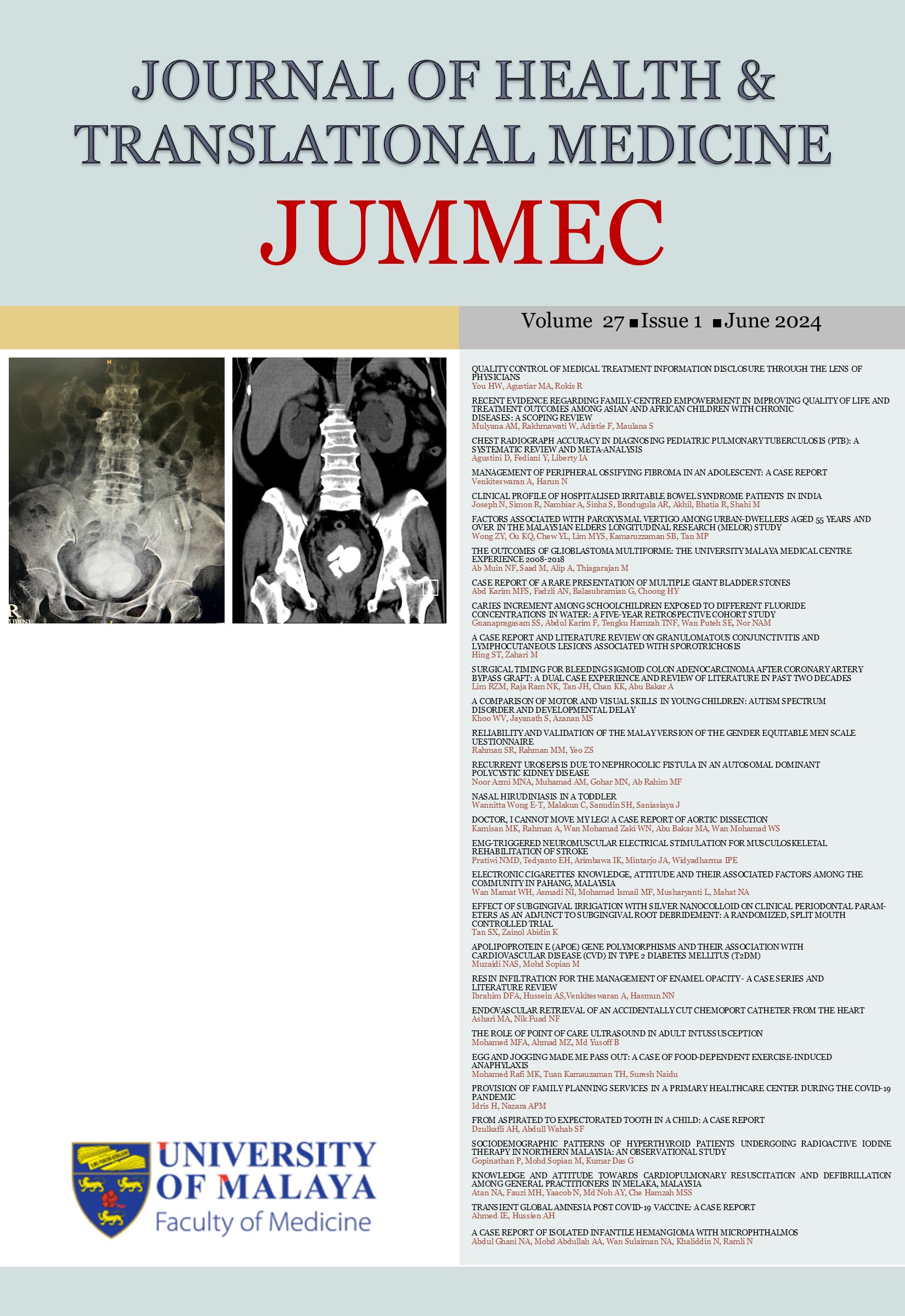SOCIODEMOGRAPHIC PATTERNS OF HYPERTHYROID PATIENTS UNDERGOING RADIOACTIVE IODINE THERAPY IN NORTHERN MALAYSIA: AN OBSERVATIONAL STUDY
Received 2023-06-09; Accepted 2023-10-02; Published 2024-02-15
DOI:
https://doi.org/10.22452/jummec.vol27no1.27Abstract
Introduction: Sociodemographic data of hyperthyroid patients undergoing RAI therapy remains limited. This study aims to assess the sociodemographic profile of hyperthyroid patients referred for RAI therapy in northern Malaysia.
Methods: In this study, the participants involved were the hyperthyroid patients referred for RAI therapy at the Department of Nuclear Medicine, Hospital Pulau Pinang, from May 2019 to May 2020. Self-reported sociodemographic and clinical information were documented. Descriptive statistics were applied with continuous variables presented as mean and standard deviation and categorical variables as frequencies and percentages.
Results: Among the 123 patients studied, the majority were female, with a mean age of 43.9 years. Most patients were of Malay ethnicity, hailing from Kedah, married, and acquired lower education. They were employed with an average monthly income of RM2303.88. The patients were primarily diagnosed with Graves’ disease without other comorbidities and were in a hyperthyroid state biochemically. A significant portion underwent RAI therapy for the first time, receiving a fixed cumulative dose of 555 MBq.
Conclusions Overall, the sociodemographic patterns observed in this cohort align with established trends of thyroid disease related to age, gender, demographics, and etiology. However, the ethnic distribution contradicts previous literature, as Malay ethnicity exhibited the highest percentage of thyroid disorders in this study. Despite medical therapy, many patients had poor thyroid function control at the time of referral, necessitating RAI therapy for definitive management. Further, most patients had lower educational backgrounds, lower incomes, and were employed. Additionally, the presence of common non-communicable diseases in Malaysia was noted among the patients.
Downloads
Downloads
Published
Issue
Section
License
All authors agree that the article, if editorially accepted for publication, shall be licensed under the Creative Commons Attribution License 4.0 to allow others to freely access, copy and use research provided the author is correctly attributed, unless otherwise stated. All articles are available online without charge or other barriers to access. However, anyone wishing to reproduce large quantities of an article (250+) should inform the publisher. Any opinion expressed in the articles are those of the authors and do not reflect that of the University of Malaya, 50603 Kuala Lumpur, Malaysia.


